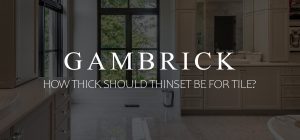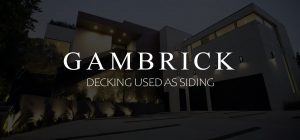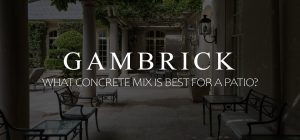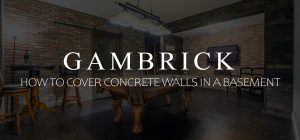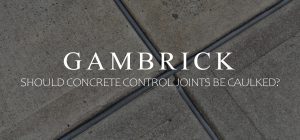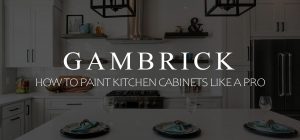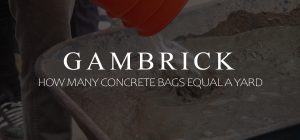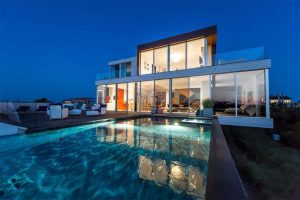What Is Wood Veneer?
Wood Veneer is very thin slices of real wood, typically less than an 1/8th inch thick, glued and pressed onto panels which are then used to make finished products like cabinets, flooring and furniture. A slice of wood veneer resembles a sheet of poster board in terms of thickness and typically comes in a rolled sheet. Because wood veneer is technically made from real wood, the finished product can be sold as an authentic wood product. The advantage is that it costs a lot less to buy wood veneer products vs. solid wood. This is because only a very thin layer is actually real wood. The thick inner layer is made from a cheaper material like MDF. However, the outer layer is still real wood. So the appearance and feel are the same as solid wood products.
Wood veneer offers a rich and elegant surface for a wide range of applications, including furniture. The primary purpose companies use veneers is to reduce a project’s cost while maintaining the overall aesthetics and performance.
You care for wood veneer in the exact same way as real wood including staining and sealing.
Manufacturers place veneers over pieces of manufactured wood using screws, nails, or adhesives. Wood veneers are often used on floors, furniture, and cabinets. Manufacturers use particleboard, plywood, or MDF to make the units’ frame and shelves. However, they use veneers to cover the viewable surfaces.
Not only does this give an impression that the product is made of solid hardwood, but it is also a cost-effective option for homeowners. You can find veneers in a wide range of grains and finishes. Veneers have a more consistent appearance than hardwood products. Some woodworkers and carpenters create their own veneers, while others purchase them from manufacturing companies.
Wood Veneer Quality Standards
Wood veneers are accepted as a modern development in the woodworking and furniture industry. Modernization and expansion in the industry occurred in the mid-20th century, improving construction and furniture design, leading to better wood resource utilization.
A Natural Product
Many people expect wood veneers to have a uniform appearance like laminate. However, bear in mind that wood is a natural product and all trees have unique characteristics, meaning no two trees are identical. Therefore, you must not consider natural characteristics in individual veneer pieces as defects.
You will find a wide range of colors and grains that vary from log to log. These features significantly contribute to the unique beauty of the veneer, leading to an enhanced interior character. While some companies make efforts for a consistent appearance in veneer pieces, you will see some natural inconsistencies.
One of the biggest benefits to using wood veneer is that it’s real wood. This means no two pieces will be exactly the same. It’s not a print like with laminate products. The surface of a wood veneer product is real wood. Although the inside is made from something else, typically MDF.
Because wood veneer is made from real wood, it needs to be cared for like any wood product. That means cleaning, staining and sealing it just like wood. Use the same products on wood veneer as with real wood. But remember to check with the manufacturer because they sometimes seal the veneer with a product that requires special care. This is very common with wood veneer cabinetry or flooring.
Wood veneers are an excellent material that helps in better wood utilization. A veneer is a thin piece of wood used to make furniture and interior decorations. Wood veneers are a natural product with eco-friendly properties, making them safe, non-toxic materials that don’t emit volatile organic compounds (VOCs). Because wood veneer is a natural product, it has a longer lifespan than laminate products.
Hardness
Unlike laminates, veneers can’t withstand the rigors of heavy use, but some companies offer veneers that meet strict testing standards for pressure, water, stains, light, and wear resistance. However, certain everyday circumstances can cause concerns for homeowners.
For instance, when you do paperwork on a wood veneer surface, pen pressure can lead to denting in the material. Therefore, it is crucial to choose veneers with dent-resistance properties.
We recommend taking some precautions, such as using blotters or desk pads in high-traffic areas. Ensure you develop a habit of placing blotters and desk pads on the surface when doing paperwork to absorb wiring pressure.
Aging and Light Exposure
Wood is a natural material that undergoes aging over time. It changes consistently because environmental factors affect, such as light, affect it. Exposure to the sun’s UV light or artificial sources can cause different wood veneers to react differently. For instance, natural veneers, when exposed to sunlight, can become darker.
On the other hand, veneers with darker stains become lighter when exposed to the sun’s UV light or artificial light sources. Besides, natural maple will turn yellow over time, and cheery will undergo aging more dramatically than other materials.
Remember, continued exposure to the sun’s UV light will cause the veneer to age more dramatically. Therefore, it is crucial to consider where you will use veneer surfaces before the installation process. Generally, we recommend not exposing veneer surfaces to direct sunlight.
Metamerism
Metamerism is a special effect produced by wood, especially when two veneer pieces look different based on the direction, viewing angle, grain pattern, lighting, and texture. It is an important concept known as the “Flip” because when you look at the veneer from one angle, the surface will appear lighter.
However, when you view it from the opposite angle, the surface will turn darker. Metamerism becomes more apparent when wood veneer grains meet perpendicularly at a 90-degree angle. Therefore, it is essential to comprehend the “Flip” effect before using veneers to relieve any concerns.
Pros and Cons of Wood Veneer
Wood veneers are popular materials for interior construction and decoration. Interior decorators use this material to provide finishing to different wood-based products. You can glue wood veneer to different engineered woods, including block-board, particleboard, plywood, and MDF.
Wood Veneer – Pros
Wood veneers improve interior aesthetics like natural wood. Not only do wood veneers cost less, but you can also glue them easily to engineered wood substrates to provide natural wood-like attractiveness, making them more aesthetically appealing.
Because each tree has unique characteristics, each veneer sheet is unique, allowing you to give your furniture or interior decoration an exclusive look. Unlike laminates, you can customize wood veneers with varnish and polish to make their shade darker.
Besides, when you apply wood veneers to weak woods, such as particleboard, they can increase its strength. Research shows that HDF, MDF, and other fiberboards are prone to water damage, and applying wood veneers can increase fiberboard durability and prevent damage.
Wood Veneers – Cons
Although wood veneers are aesthetically appealing, they are prone to water damage. However, you can protect them from damages by applying a sealant on the surface. Unlike laminates, wood veneers are harder to install and require an experienced and skilled worker to remove air gaps and achieve a perfect finish.
Wood veneers also require frequent maintenance than other types of wood products. You need to polish them from time to time to increase their durability and strength. Sanding is a suitable method to repair natural wood furniture, but this is not the case with wood veneers. Because wood veneers are fragile, you can’t fix them once damaged.
Summary: What Is Wood Veneer?
Wood Veneer is very thin slices of real wood, typically less than an 1/8th inch thick, glued and pressed onto panels which are then used to make finished products like cabinets, flooring and furniture. A slice of wood veneer resembles a sheet of poster board in terms of thickness and typically comes in a rolled sheet. Because wood veneer is technically made from real wood, the finished product can be sold as an authentic wood product. The advantage is that it costs a lot less to buy wood veneer products vs. solid wood. This is because only a very thin layer is actually real wood. The thick inner layer is made from a cheaper material like MDF. However, the outer layer is still real wood. So the appearance and feel are the same as solid wood products.
Wood veneer offers a rich and elegant surface for a wide range of applications, including furniture. The primary purpose companies use veneers is to reduce a project’s cost while maintaining the overall aesthetics and performance.
You care for wood veneer in the exact same way as real wood including staining and sealing.
Manufacturers place veneers over pieces of manufactured wood using screws, nails, or adhesives. Wood veneers are often used on floors, furniture, and cabinets. Manufacturers use particleboard, plywood, or MDF to make the units’ frame and shelves. However, they use veneers to cover the viewable surfaces.
If you have any questions or comments about wood veneer E-mail any time.






